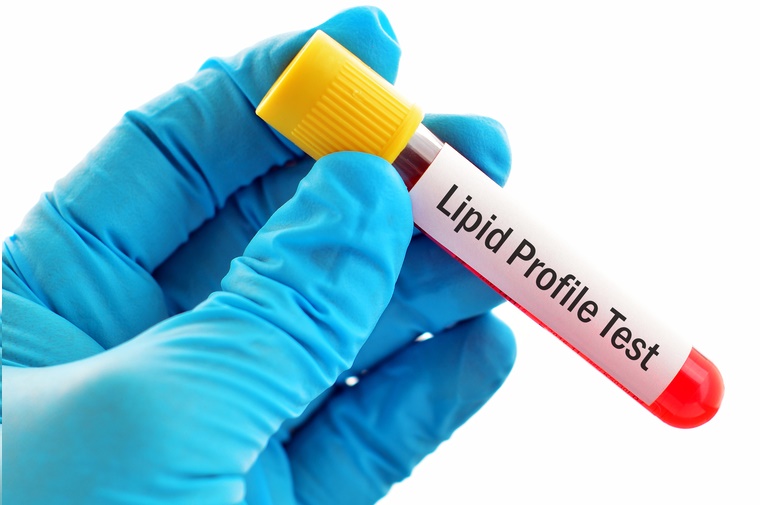Keeping your heart healthy means maintaining healthy cholesterol levels, which can lower your chances of developing heart diseases. It’s advised that everyone aged 20 or older undergo a lipid profile every four to six years1 to monitor cholesterol levels in the body.
A lipid profile, also called a lipid panel2, is a blood test that measures lipid (aka fats and fatty acids) levels in the body, which helps in assessing the risk of heart diseases.
A guide to help you interpret your cholesterol level numbers
How is a lipid profile done?
When undergoing a lipid profile, your healthcare provider will collect a blood sample by puncturing a fingertip or via a needle inserted into a vein.
Before having your blood taken, you may need to fast for 9 to 12 hours, wherein you’re only allowed to drink water. However, there are some healthcare practitioners who do not require fasting, especially when testing for younger patients (ages 2 to 24). Hence, be sure to clarify with your doctor if you need to fast before the test.
What do the results contain?
A lipid panel usually includes information on the following: Total cholesterol, which refers to the total amount of cholesterol in the body. High-density lipoprotein (HDL), often called the “good cholesterol” since it removes harmful bad cholesterol.. And, Triglycerides, a type of excess fat stored in the body.
Other information that may be included in the lipid panel are as follows: non-HDL is calculated as total cholesterol minus HDL, cholesterol-to-HDL ratio and very low-density lipoprotein, a type of bad cholesterol that clog arteries
Cholesterol levels are usually measured in milligrams per deciliter of blood (mg/dL).
What are the ideal cholesterol levels?
1. For total cholesterol
It’s recommended that you try to keep your total cholesterol level below 200 mg/dL. Any figure higher than that may mean you are at greater risk for heart diseases, but this still depends on the amount of HDL and LDL in your blood.
– Ideal: Less than 200 mg/dL
– Borderline high: 200-239 mg/dL
– High:: >240 mg/dL
2. For LDL or bad cholesterol
Bad cholesterol increases the risk of heart diseases and stroke. When evaluating your LDL level, your doctor will consider other preexisting conditions that may affect your heart health, such as diabetes and high blood pressure.
In general, however, you may interpret your LDL results as follows:
– Ideal: Less than 100 mg/dL
– Near ideal: 100-129 mg/dL
– Borderline high: 130-159 mg/dL
– High: 160-189 mg/dL
3. For HDL or good cholesterol
HDL cholesterol is healthy cholesterol. It helps transport bad cholesterol out of the bloodstream and arteries, hence keeping your arteries healthy. Having a higher HDL level, therefore, is ideal.
– Good or ideal: 60 mg/dL or higher
– Concerning: 40 mg/dL or lower
4. For triglycerides
Trigylcerides, another type of fat in the bloodstream, is also linked to heart disease and diabetes.
– Normal level: less than 150 mg/dL
– Borderline High: 150-199 mg/dL
– High: 200-499 mg/dL
– Very high: 500 mg/dL
In addition, your lipid panel may also show your total cholesterol-to-HDL ratio and your VLDL or very low-density lipoprotein. The former isn’t always included in lipid profiles, but it may help your doctor create a more effective approach in managing your cholesterol levels. The latter, on the other hand, is a type of bad cholesterol containing high amounts of triglycerides. Normal levels of VLDL can range from 5 to 40 mg/dL.
What should I do after getting my results?
Your doctor will look at your cholesterol level report and assess it while considering other conditions you may have, such as weight problems, heart diseases, diabetes, and others. Your family history should also be taken into account.
Generally, if your cholesterol levels are higher or lower than what’s ideal, your doctor will help you set the right goals. He or she may recommend medicines to manage your cholesterol in combination with exercise and a healthy diet.
***This article is not intended to be a substitute for professional medical advise, diagnosis or treatment. Always seek the advise of your doctor or other qualified health provider with any questions you may have regarding a medical condition
—-
1 https://labtestsonline.org/tests/lipid-panel
2 https://www.mayoclinic.org/tests-procedures/cholesterol-test/about/pac-20384601
Other References:
https://www.webmd.com/cholesterol-management/understanding-your-cholesterol-report#1

